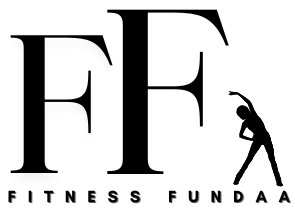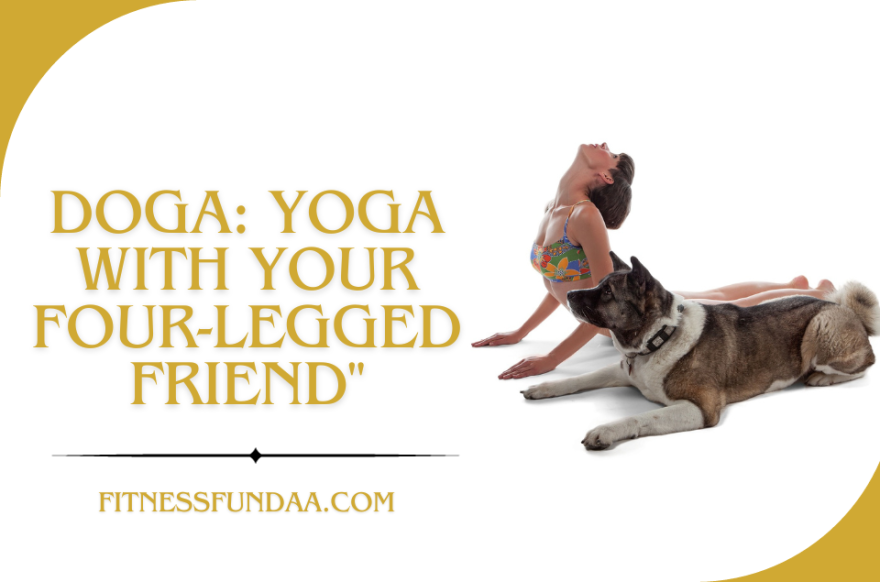Do you feel bored while doing yoga alone? Or due the hectic schedule you aren’t able to give time to your dog. Don’t worry, we’ve got you covered. In this article we’ll discuss the benefits of Doga ( Yoga with your four legged friend.
Bonding Time
The meaning of “Bonding Time” in the context of Doga (Yoga with Your Four-Legged Friend) refers to the unique and entertaining opportunity the practice provides for strengthening the emotional connection and deepening the relationship between a pet owner and their dog. This bonding time is a central aspect of Doga, distinguishing it from traditional yoga practices.
Shared Experience:
Doga involves both the human and canine participants in a series of yoga poses, stretches, and calming activities. The shared experience of engaging in these activities together creates a bond based on mutual participation and understanding.
Mindful Connection:
The mindfulness cultivated during Doga encourages both the human and dog to be present in the moment. As pet owners focus on their breath, movements, and the well-being of their dogs, a deep and mindful connection is formed. This shared mindfulness reinforces the emotional connection between the two, fostering a sense of unity.
Trust and Relaxation:
The physical closeness and gentle touches involved in Doga promote trust and relaxation. Dogs, being sensitive to their owners’ energy, respond positively to the calming atmosphere created during the practice. This trust and relaxation contribute to a sense of security and comfort, enhancing the emotional bond.
Quality Time:
Doga provides a dedicated time for the owner and their dog to spend together without distractions. In our busy lives, carving out intentional quality time strengthens the bond, as the dog recognizes the importance of this shared activity with its owner.
Non-Verbal Communication:
Dogs primarily communicate through body language and non-verbal cues. Doga encourages pet owners to be attuned to their dogs’ movements, ensuring that the practice is comfortable and enjoyable for them. This heightened awareness of non-verbal communication strengthens the understanding between the two.
Positive Association:
If the dog enjoys the Doga experience, it becomes a positive association. Dogs are likely to look forward to this shared time, associating it with positive feelings and the presence of their beloved owner. This positive reinforcement contributes to a stronger bond over time.
Emotional Resonance:
The shared experience of Doga creates emotional resonance between the human and canine participants. While doing the practice,we are able to cultivate the feelings of joy, calmness, freshness and connection which further contributes to our positive emotions linked with the shared activity.
Embarking on a yogic journey with your canine companion transcends the conventional notions of exercise. It’s a harmonious expedition where the fluidity of your movements and the serenity of your breath intertwine, creating an ethereal connection between you and your four-legged confidant. This shared odyssey isn’t merely a physical endeavor; it’s a nuanced dance of energies, an amalgamation of tranquility and companionship.
Yoga, in this context, emerges as a conduit to a shared realm of peace and relaxation. The cadence of your poses and the gentle inhales and exhales extend beyond the tangible, ushering in a profound sense of calmness for both you and your furry accomplice. It’s an intimate dialogue between breaths, a silent understanding woven into the fabric of each stretch.
Beyond the physicality, the yoga session metamorphoses into a crucible where emotional bonds are forged. It becomes a dedicated sanctuary where stress dissipates, leaving room for a genuine connection to flourish. This shared introspection spills over into everyday life, transforming routines into moments of mindfulness and well-being for both human and canine.
This symbiotic experience isn’t confined to the yoga mat; it transcends into an ecosystem of positivity and support. The reciprocity of encouragement weaves itself into the tapestry of daily existence, enhancing the overall quality of life for both yogi and canine. It’s not a mere series of postures; it’s a sojourn of joy and unity, a dance where each movement resonates with the heartbeat of a unique companionship.
Dog-Friendly Poses:
Engaging in yoga with your dog involves incorporating poses that include them, ensuring both safety and comfort.
- Paw-in-Hand Pose: Sit cross-legged and hold your dog’s paw gently, fostering connection through touch.
- Back-to-Back Stretch: Sit with your dog facing away, stretching arms forward for a shared moment of relaxation.
- Canine Cobra Pose: Invite your dog to stretch alongside you in the Cobra pose, ensuring their comfort.
- Downward Dog Duo: Include your dog in the Downward Dog pose, combining stretch with interactive play.
- Doggie Meditation: Sit together for mindful breathing, creating a serene moment of shared relaxation.
- Puppy Twist Pose: Twist gently while inviting your dog to sit in front for a comforting stretch.
- Pet Partner Tree Pose: Stand tall using your dog for balance in the Tree pose, enhancing your bond.
- Belly Rub Bridge Pose: Lying down, invite your dog for belly rubs as you lift into the Bridge pose.
- Paws Up Forward Bend: Bend forward, encouraging your dog to place paws on your back for a heartwarming connection.
- Snout-to-Spinal Stretch: Extend your legs, inviting your dog to walk along your spine for a delightful massage.
In conclusion, As you move through the yoga postures, the tranquil nature of the practice extends its benefits to both human and canine participants. The shared experience creates a profound sense of calmness, contributing to stress reduction and a harmonious environment. Beyond the physical aspects, doga fosters a deeper emotional connection, providing dedicated time for relaxation and unwinding
Whether practicing alone or in a group setting, doga transforms the concept of exercise into a dynamic expression of togetherness. It’s a journey where each stretch and breath resonates with the shared heartbeat of a unique companionship, creating not only a healthier physical state but also a richer, more meaningful connection between human and canine.
Frequently Asked Questions (FAQs) about Yoga with Your Dog:
Can any type of yoga be practiced with a dog?
A: While some traditional yoga poses can be adapted for doga, it’s essential to focus on gentle movements and poses that consider your dog’s well-being. Doga often involves incorporating your dog into poses, gentle massages, and activities that suit both human and canine participants.
Is there an ideal duration for a doga session?
A: The duration of a doga session can vary based on the preferences and endurance of both the owner and the dog. Starting with shorter sessions and gradually increasing the time is a good approach. Aim for a balance that keeps both participants engaged and comfortable.
Do I need prior yoga experience to practice doga?
A: No prior yoga experience is necessary to practice doga. Doga is adaptable and can be enjoyed by individuals with varying levels of experience. Beginners can start with simple poses and gradually progress.
Can doga help with behavioral issues in dogs?
A: Doga can contribute to positive behavioral outcomes in some dogs by fostering a sense of calmness and promoting bonding. However, it’s not a substitute for professional training or behavior modification if your dog has specific behavioral issues.
Are there specific breeds that are more suited for doga?
A: Doga is adaptable for various breeds, but the suitability depends more on individual temperament and comfort than the specific breed. Dogs with calm and social temperaments may find doga more enjoyable.
see also :Yoga and Meditation

